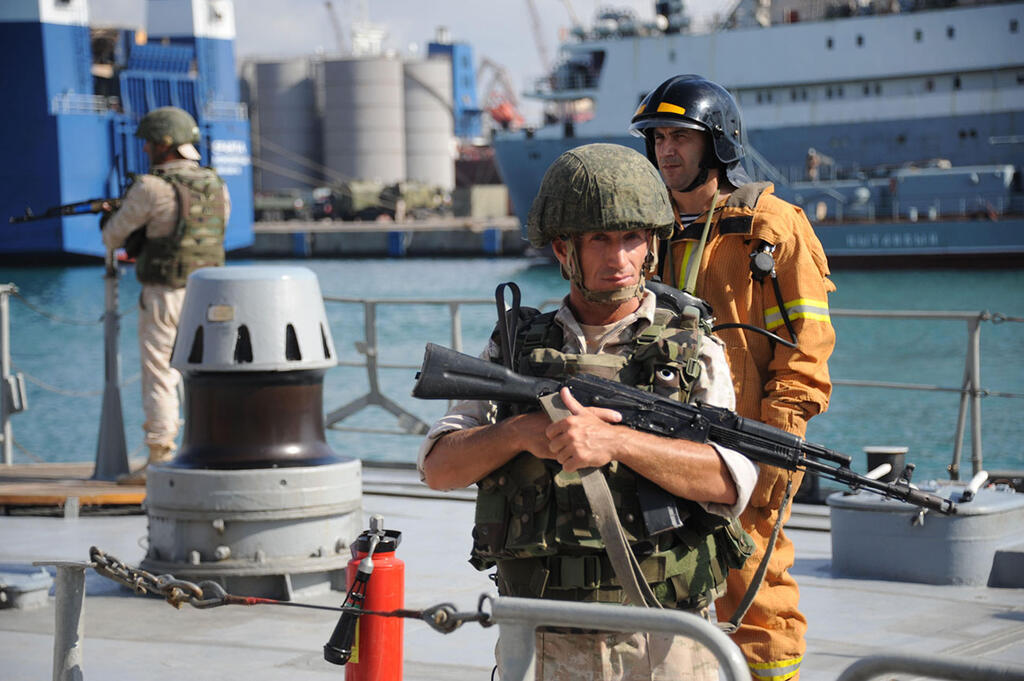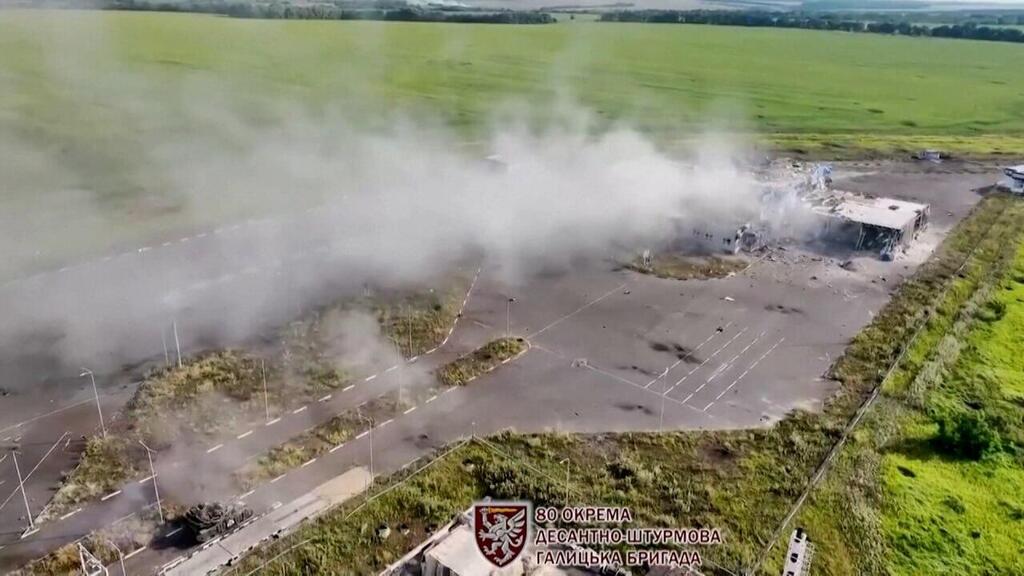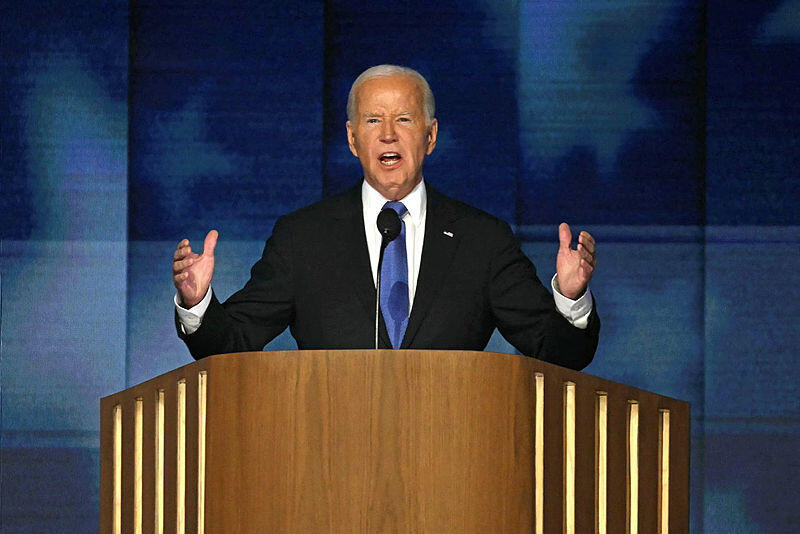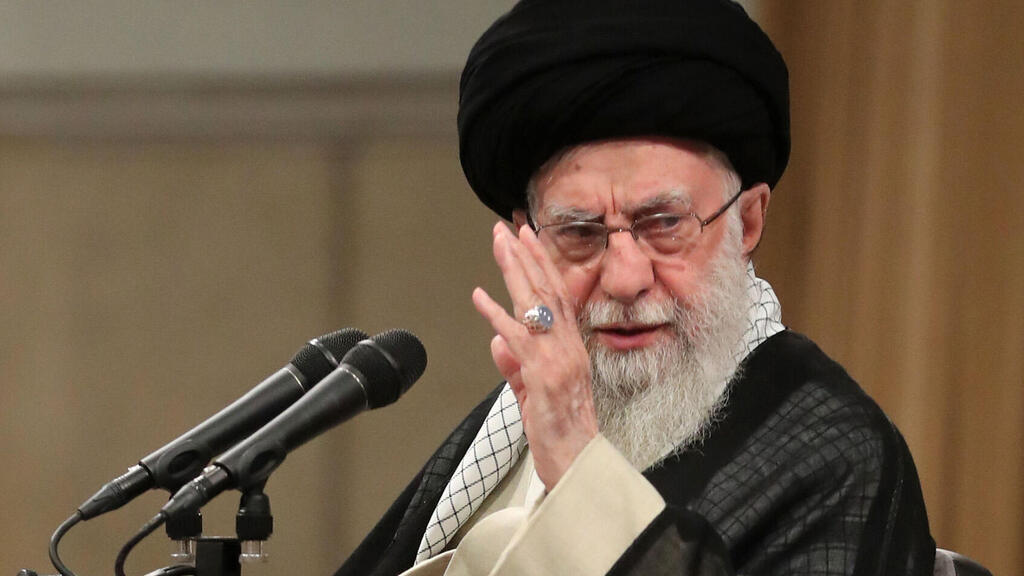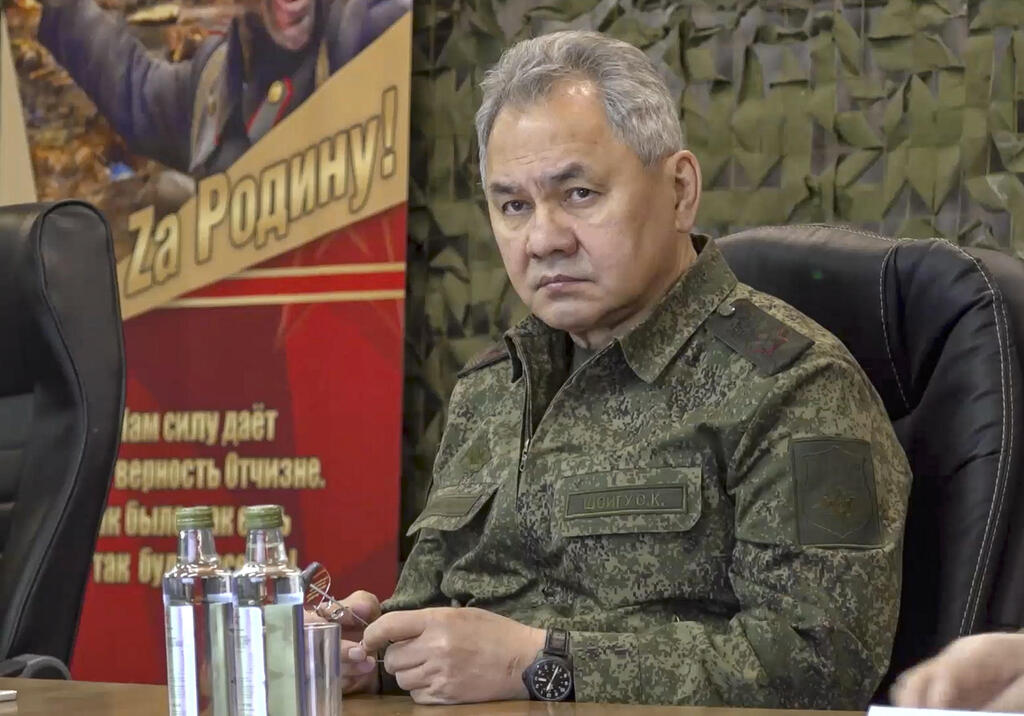Getting your Trinity Audio player ready...
It is becoming increasingly clear that the war in Gaza is not only a regional conflict but is tied directly to an effort by extremist regimes to tilt the global balance of power in their favor. To accomplish this grand strategic goal a group of countries—a radical entente,—is working together to expel the U.S. from the Middle East and block Israel from achieving its objective of undoing Iran's proxy strategy aimed to take over the region. Simultaneously the entente is hard at work to ensure Russia prevails in its war in Ukraine and, like in the case of Israel, the West’s zone of influence is progressively shrinking.
In pursuing this scheme, the entente—comprising Russia, Iran, Syria and North Korea—is increasingly collaborating to support each other militarily and politically. A good example of the operation of this radical entente came on Sunday, August 11, 2024, when Moscow launched drone and missile attacks against the Kyiv region. According to Lt. Gen. Mykola Oleshchuk, the Ukrainian Air Force Commander, the Russians employed, among other weapons, North Korean KN-23 ballistic missiles and Iran-made Shahed kamikaze drones.
7 View gallery
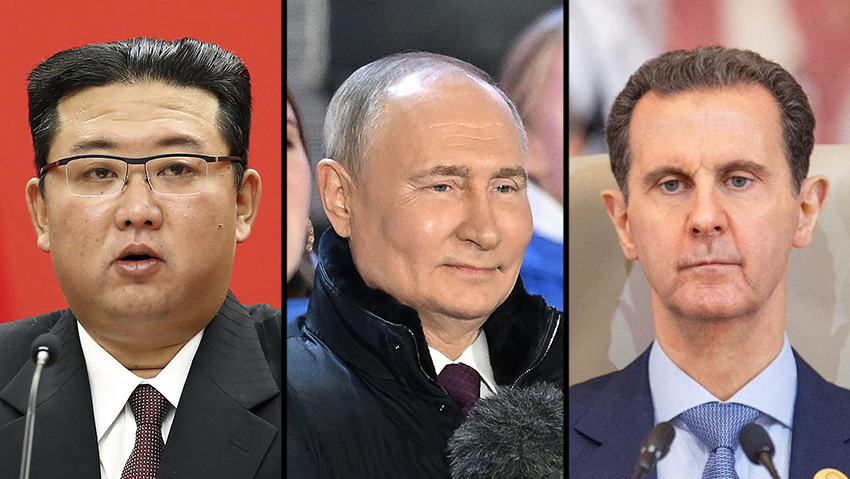

North Korean Leader Kim Jong Un, Russian President Vladimir Putin and Syrian President Bashar al-Assad
(Photo: Saudi Press Agency/Handout, NATALIA KOLESNIKOVA/ AFP, AFP/ Reuters)
It may be recalled that on June 19, 2024, Putin arrived in Pyongyang, after a hiatus of 24 years, where he and North Korean leader Kim Jung Un signed a mutual defense pact—thus reviving the Cold War’s defense pact between the Soviet Union and the DPRK from 1961. North Korea’s state-run Korean Central News Agency (KCNA) later reported that the pact’s Article 4 called for assistance “in the event that either of the parties is invaded and pushed into a state of war.” Accordingly, if one country is attacked the other must deploy “all means at its disposal without delay” to provide “military and other assistance.”
In the meantime, Moscow continues to receive North Korean missiles and ammunition which helps Russia sustain its war against Ukraine and, in return, seems prepared to offer North Korea increased military-technical cooperation.
On January 8, 2024, the National Intelligence Service (NIS) of South Korea verified that Hamas had been using weapons from North Korea in its war with Israel in Gaza. The NIS released a photo of a North Korean F-7 rocket-propelled grenade (RPG) with Korean letters inscribed on it.
In addition, Israeli forces operating in Gaza had reportedly found North Korean Bang-122 artillery shells and 122-mm multiple rocket launchers. These finds were in addition to the huge stocks of arms provided directly or indirectly by Iran which were uncovered in the Strip, including Fajr-3 and Fajr-5 rockets (43 km/27 mi and 75 km/47 mi range respectively), Italian-designed TC/6 anti-tank mines copied by Iran’s arms industry, copied Iranian-designed kamikaze drones and AM-50 Sayyad (Arabic for “hunter”), an Iranian-made a sniper rifle that fires a .50- caliber round.
Of course, North Korean military and technical support for Hezbollah is even more extensive and long-standing. For example, in an apparent bid to deter Israel, a video released by the Iranian proxy in Lebanon on August 16, purportedly showed a massive underground facility, code-named “Imad 4,” (after Imad Mughniyeh, the Hezbollah arch-terrorist killed in 2008) linked to an extensive tunnel network. Numbered trucks carrying missiles big enough to be considered ballistic missiles, possibly the Iranian Fateh-110, were shown moving unencumbered through the maze to an apparent underground launch site.
The operation is clearly a copy of the Korean People’s Army (KPA) modus operandi which relies on subterranean infrastructures to enable trucks to transit to missiles’ launch pads. A platform or a slope leading up from the tunnel is constructed allowing the truck to exit the tunnel, fire and retreat back down so as to avoid detection.
The Syrian link
Syria has been the host of Russian air and naval bases. Alongside the Hmeimim airbase, from which Russia launched air attacks in support of the Bashar al-Assad regime, Moscow also controls the Tartus naval facility in Syria, its only naval foothold in the Mediterranean. Russia’s defense ministry said in January 2023 that Russia and Syria had restored the al-Jarrah military air base in Syria’s north for joint use.
Syrian President al-Assad on a visit to Moscow in March 2023 told the RIA news agency “We think that expanding the Russian presence in Syria is a good thing. Russia’s military presence in any country should not be based on anything temporary.” According to a Kremlin transcript Assad also told Putin, “Because this is my first visit since the start of the special military operation in Ukraine, I would like to repeat the Syrian position in support of this special operation… Syria recognizes the territories of Ukraine which Russia has seized as Russian.”
Syria also hosts some 55 Iranian military bases and 515 other military points, the majority in Aleppo and Deir Ezzor governorates and the Damascus suburbs.
The Syrian militia known as Quwat Al-Ridha—an armed group that is part of Iran’s main proxy force the Lebanese Hezbollah—is directly trained by Hezbollah and the Iranian Revolutionary Guard Corps (IRGC). On October 30, 2023, Syrian Hezbollah militants fired rockets targeting the U.S. military base located in the Conoco gas field in Syria's eastern Deir ez-Zor province. Another attack was launched on August 13, 2024. Following the attack, the Kurdish-led Syrian Democratic Forces (SDF), a U.S.-backed militia, launched retaliatory shelling against the group in western Deir ez-Zor.
According to “U.S. officials” cited in the Wall Street Journal on March 6, 2022, Moscow was recruiting Syrians skilled in urban combat to fight in Ukraine in preparation for Russia expanding its invasion deeper into cities.
The London Guardian reported March 11, 2022, that Syria’s military has begun recruiting troops from its own ranks to fight alongside Russian forces in Ukraine promising payments of $3,000 a month – a sum up to 50 times a Syrian soldier’s monthly salary. Enlistment notices have been posted on regime-linked websites, including profiles linked to the 4th Division, one of Assad’s core units. One such advert stated that troops who sign up will be fighting in Ukraine.
Accordingly, Russian President Vladimir Putin gave the green light for what he claimed would be up to 16,000 volunteers from the Middle East deploying alongside Russian-backed “rebels” fighting in Ukraine. Russia’s defense ministry said the deployment would be made to the breakaway Donbas region of eastern Ukraine where much of the fighting had been focused.
The New York Times on April 6, 2022, reported that a contingent of at least 300 Syrian soldiers had already arrived in Russia for regular training, but it was unclear if or when they would be sent to Ukraine. The paper said, however, that “The Ukrainian war enlistment campaign was likely carried out with the backing of the Kremlin-friendly Bashar al-Assad regime.”
Reportedly the fighters enlisted mainly came from the government’s troops including the elite 25th Special Mission Forces Division and the Liwa al-Quds brigade made up of Syrian Palestinians, whom the Russians had previously trained to fight against the internal opposition and Islamic State. The Syrian provision of troops “effectively return[s] the favor to Moscow for helping President Bashar al-Assad crush rebels in an 11-year civil war,” the paper said.
In January 2023, the opposition-aligned Syrian Observatory for Human Rights reported that just under 2,000 soldiers of the Syrian Arab Army, specifically the 25th Special Mission Forces Division, had been deployed to fight on behalf of Russia in Ukraine.
Apparently in response sources within Ukraine's Military Intelligence (HUR) released a video to Kyiv Post on June 3, 2024, showing footage of intense combat by Ukrainian special forces inside Syria. In collaboration with Syrian rebels, the forces “launched coordinated attacks on Russian mercenary positions in the Golan Heights, taking down checkpoints, strongholds, and convoys.”
The paper went on to report that since the beginning of the year, the rebels, supported by Ukrainian operatives, have inflicted numerous strikes on Russian military facilities represented in the region by the so-called "grouping of forces of the Armed Forces of the Russian Federation.”
The Kursk gambit
It is within this geopolitical context that the surprise incursion launched by Ukraine into Russia on August 6, in the Kursk region must be viewed. The attack has stunned and embarrassed Russia’s military, once again exposing its slow and lumbering approach against a nimble opponent. It has posed a major new test for Putin’s leadership, demonstrating anew Russia’s military weakness in regions that were supposed to be under tight control. The Ukrainian advance also sent shock waves through Russia’s elite and left tens of thousands of residents of border regions feeling furious and abandoned, according to the Washington Post on August 12.
The Associated Press on August 9, cited Ukrainian President Volodymyr Zelensky’s adviser Mykhailo Podolyak as saying that the cross-border attacks will cause Russia to “start to realize that the war is slowly creeping inside of Russian territory.” This raises the question of whether the mini-invasion will trigger Article 4 of the Russia-North Korea pact and KPA troops will soon be battling Ukrainian soldiers.
Moreover, in view of the Ukraine offensive, Russia’s threat to NATO must be reevaluated both in terms of its capabilities and the sobering impact that the dramatic demonstration of his country’s vulnerability must have had on Putin. The swift cross-border raid shows Ukraine’s ability to seize the initiative. It has also dealt a blow to the Kremlin, shattering Putin's narrative that Russia has remained largely unaffected by the hostilities.
The Russian president certainly understands the strategic ramifications of the Ukrainian offensive. In a televised meeting with government officials, Putin said, "One of the clear goals of the enemy is to sow discord and destroy the unity and cohesion of Russian society.”
The Guardian on August 14 observed “It is usually a sign that something is rattling the Kremlin when the elite start using all kinds of euphemisms to refer to it… Now, as Ukrainian forces advance deep into Russian territory, there is a similar linguistic game at work… Putin and other officials have referred variously to a ‘situation’, a ‘terrorist attack’ and ‘the events in Kursk region’. Notably absent are words such as ‘invasion’ or ‘Ukrainian control’ of Russian territory.”
For its part, the White House could be believed when, according to Reuters on August 14, it said Ukraine gave no advance notice of its incursion and the United States had no involvement. It is highly likely Biden would have vetoed the operation had he been consulted. After all, Zelensky is still pleading with Washington to supply his country with long-range weapons capable of striking deep inside Russia.
Indeed, this position dovetails with the Biden administration’s stand on the war in Gaza as well. For months, Washington has been acting to halt, impede or at least slow the IDF’s advance in Gaza so as to avert a “blood bath” among ”innocent civilians.” To boot, it has relentlessly pressured Israel to reach a cease-fire in the war so as to “defuse” the crisis from escalating into a “regional conflict.”
By taking this stand, Biden has placed the U.S. squarely in the same trench as the mullahs and Hassan Nasrallah who would dearly like to stop the IDF from destroying Hamas and turning to deal with Hezbollah. Reuters on August 13, cited “three senior Iranian officials” as stating that only a cease-fire deal in Gaza would hold Iran back from direct retaliation against Israel.
Similarly, the Washington Post on August 16, cited “an individual with close ties to Hezbollah” as indicating the Iranian proxy “will not launch its retaliation operation during the Qatar talks because the party does not want to be held accountable for obstructing the talks or a potential deal… The retaliation can wait.” The same day the New York Times cited “official sources” in the U.S., Israel and Iran as saying Tehran is expected to delay its attack in order to give the Qatar talks a chance to reach a cease-fire in Gaza.
Tehran is in a panic over the prospect of Israel rolling back its time-tested proxy strategy for taking over the Middle East and is desperately trying to extricate its agents from ruin. To this end, it has been lobbying incessantly for a cease-fire as a way to preserve its surrogates. Not surprisingly Hezbollah’s leader Hassan Nasrallah has repeatedly pledged that a cease-fire in Gaza will bring a cessation of hostilities in Israel’s north which he hopes would shelve any IDF plans to attack his terrorist army. The mullahs must be aware that crippling the Hezbollah terrorist army—the praetorian guard of Iran’s nuclear installations—would embolden Israel to launch a preemptive attack against their nuclear program just as it is about to cross the threshold.
As if Iran and Hezbollah needed reminding of their vital interest in stopping the IDF (and that Washington was now fully immersed in promoting their agenda), Biden issued a statement from the White House on August 16, warning both that “[a] comprehensive cease-fire and hostage release deal [is] now in sight, no one in the region should take actions to undermine this process.”
Undoubtedly part of Biden’s effort for a cease-fire is the likelihood that U.S. forces and assets in the theater would come under attack if the Gaza war escalates into a full-scale regional conflict. Yet even more central to the administration’s thinking are pure political calculations pertaining to the upcoming U.S. elections. The Biden administration, it is plain, is seeking a “comprehensive” deal for a cease-fire and hostage release as an election boost and is likely to hype its “diplomatic breakthrough” to no end if one is struck. As far as the administration is concerned this is by far a better outcome than having to run for office in the midst of a regional conflagration involving the U.S. military.
The wishy-washy posture projected by the Biden administration is in full view. Iran’s weapons pipeline to Russia for use in its war in Ukraine is in direct conflict with U.S. interests and is threatening to undermine the very goals that the president has pursued vis-a-vis Putin. Yet, Biden has taken no measures to punish the mullahs except for levying additional sanctions whose real impact has proven time and again to be in doubt, but are useful politically to fend off charges that the administration's weak-kneed approach is courting disaster.
A serious U.S. undertaking would instead seek to take advantage of the Ukrainian offensive against Russia to undermine the entente and reshape the global power balance. To this end, it would give Israel the green light to simultaneously launch an offensive to remove the Hezbollah threat on Israel’s northern border. Both Russia and Iran would be put under pressure. Iran's ability to assist Russia would be curtailed given that its main strategic asset in the region—Hezbollah—was being hammered and in need of support which will aid Ukraine—Biden’s core interest.
In turn, the greater Ukraine’s battlefield successes, the more Russia’s ability to help Iran comes into question and the stronger would be the mullahs' disincentives to intervene to rescue their Lebanese proxy. Not only would the chances for cutting off the main arm of the Iranian “octopus” seeking to choke Israel grow markedly, but the main deterrent against an Israeli attack on Iran’s nuclear facilities be substantially eroded. Washington would then have a much easier time to get Tehran to agree to a nuclear deal.
In short, such a maneuver would turn the tables on the entente— instead of the U.S. and its allies facing multiple fronts, it would be the axis of evil confronting simultaneous challenges.
Likewise, it is still unclear why has the U.S. refrained from acting forcefully against another Iranian proxy—Yemen's Houthis—although their constant unprovoked attacks on commercial shipping in the Red Sea have caused significant dislocation to the global economy.
Even the commander of U.S. Central Command (CENTCOM), General Michael Erik Kurilla, has reportedly urged authorities in Washington to take a more robust approach against Yemen, saying current efforts to deter the nation’s pro-Palestine operations are “failing.”
According to the Wall Street Journal on June 20, Kurilla’s appeal came in a private letter addressed to U.S. Defense Secretary Lloyd Austin, which called for a “stepped-up ‘whole of government’ effort against the Houthis, employing economic, diplomatic, and potentially military pressure to discourage attacks on ships in the Red Sea.” (A good start, it may be suggested, would be the interdiction of tankers transporting Iranian crude.)
But time is short. Citing two unnamed Iranian officials, The New York Times said on August 6 that Russia has started to deliver radars and air defense equipment to Iran ahead of a possible war with Israel. On August 5, the Secretary of Russia’s Security Council, General of the Army Sergei Shoigu, arrived in Tehran to meet with senior regime officials as the Islamic Republic was weighing its attack plans. Shoigu told Iranian state media that Moscow is “ready for full cooperation with Iran on regional issues,” while Major General Mohammad Bagheri, the chief of staff of Iran’s Armed Forces— who was part of the Iranian delegation that welcomed Shoigu — noted the “deep, long term and strategic” relationship between Russia and Iran.
Soon after Shoigu’s visit on August 11, an Iranian military delegation arrived in Russia. It appears the mission was to put the final touches on an arms deal that would see the exchange of advanced Russian weapons for Iran providing Moscow with hundreds of ballistic missiles.
By moving to shore up Iranian defenses, Russia in effect is enhancing Iran's motivation to attack Israel. There is no question the Kremlin is aware of the potential strategic consequences of rushing air defense batteries, advanced radars and Su-35 fourth-generation fighter jets to Iran, particularly on the eve of Iran’s promised “punishment” of Israel. In so doing, Russia has now become a full-fledged ally in protecting Iran and thus facilitating its malign designs in the Middle East.
At a U.S. Department of State press briefing on August 12, Vedant Patel, Principal Deputy Spokesperson, stated “We are deeply concerned by reports that Iran is planning to deliver hundreds of ballistic missiles to Russia… We have been warning of the deepening security partnership between Russia and Iran since the onset of Russia’s full-scale invasion of Ukraine. This partnership threatens European security and illustrates how Iran’s destabilizing influence reaches beyond the Middle East and around the world.”
He went on to say “As we and our partners have made clear – both at the G7 and at the NATO summit this summer – together we are prepared to deliver a swift and severe response if Iran were to move forward with the transfer of ballistic missiles, which would, in our view, represent a dramatic escalation in Iran’s support for Russia’s war of aggression against Ukraine.”
Nevertheless, the next day Pentagon Press Secretary Maj. Gen. Pat Ryder told a news conference “The United States is not looking to engage in offensive operations and, again, potentially spark a wider regional conflict.” America, in other words, is not about to join Israel in attacking Iran’s nuclear facilities as retaliation for an Iranian strike on the Jewish state. Yet this mind-boggling statement should boost Tehran’s incentives to attack Israel—in direct contravention of Washington’s erstwhile wishes.
 Avigdor Haselkorn
Avigdor HaselkornThe evidence is unmistakable —the Biden administration is knowingly sacrificing the vital strategic interests of the United States for the sake of its electoral calculations.
Moreover, it is now all but clear that the beefing up of U.S. military naval, air and land forces in the region is not motivated by a mere desire to protect Israel. Biden is determined to blunt any attack on Israel for fear that otherwise a devastating missiles and drone barrage would inflict untold casualties and provoke a Samson-type Israeli response. In holding to this view, he is closely following in the footsteps of his coreligionist President Barack Obama who concluded that the wild card in the Middle East was none other than Israel, and had consequently focused his attention on stymying Jerusalem so as to prevent it from surprising him.
Biden is certainly not about to take advantage of Putin’s new crisis on the Ukrainian front, the reinforced American military posture in the Middle East and the IDF’s peak readiness to remove the Hezbollah threat, to seize the strategic initiative and decisively redress the global power balance in America’s favor.
It would make some sense if the constant admonitions by the Biden administration and its Western European allies about the need to avoid a regional war meant preventing an Israeli-Iranian blowout. Otherwise, these urgings are disconnected from reality.
In direct contrast to “[the U.S.] assessment that the conflict between Israel and Hamas has been contained to Gaza,” as stated by Gen. Ryder in his Pentagon press briefing of Aug. 13, the Israel-Hamas war was never confined to the Strip. Similarly, the war in Ukraine has been transformed some time ago and is no longer an armed conflict between two nations. The reason is the same—both battlefields are increasingly part of a radical entente’s effort to establish a “post-West,” multipolar order that will end “U.S. domination of the international system” and in effect make the world safe for authoritarianism. In this sense, Israeli Prime Minister Benjamin Netanyahu and Ukrainian President Volodymyr Zelensky are today the de-facto leaders of the Free World. The rest is noise.
- Dr. Avigdor Haselkorn is a strategic analyst. He has been published widely on national security issues.



